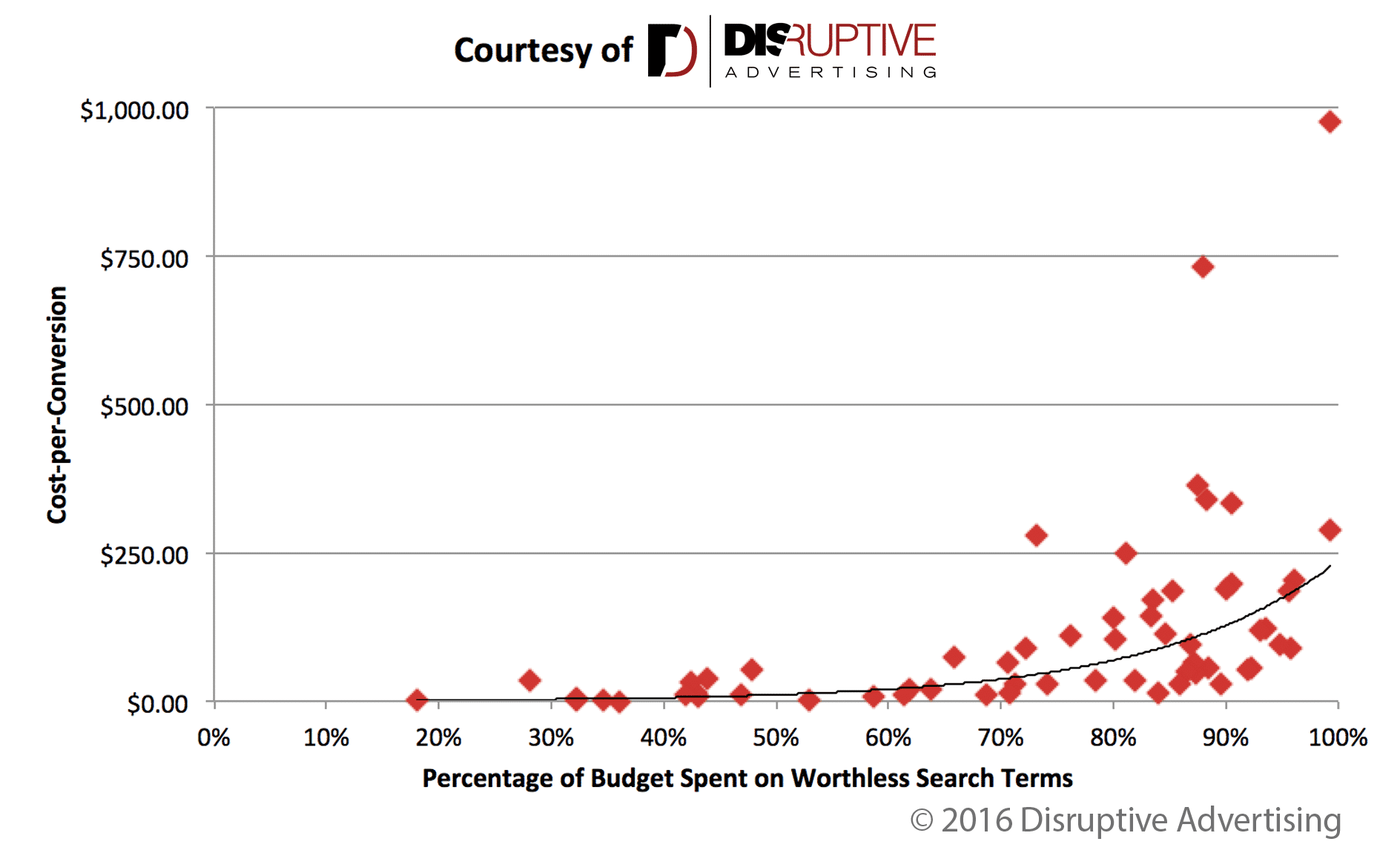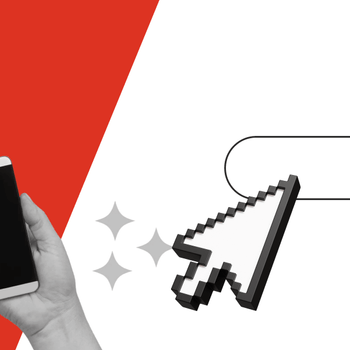How to Succeed at Automotive Digital Advertising
by Aden Andrus • March 27, 2017
Over the past few years, digital advertising has become an increasingly big deal in the automotive industry…and with good reason. As much as 90% of car buyers turn to Google Search to research an upcoming purchase.
Even when they’re standing in an automotive dealership, 50-65% of car buyers are checking out their pricing options or doing other research on what you’re offering them.
In other words, if you aren’t advertising online, you’re going to be left behind.
However, advertising online is one thing—advertising effectively online is the real challenge. After all, you can’t just throw some ads on the internet and expect to drive profitable new sales through your door. If you don’t approach your automotive digital advertising campaigns the right way, you can waste a lot of money.
The good news is, at Disruptive Advertising, we’ve managed millions in advertising spend for clients in the automotive industry. Over the years, we’ve figured out exactly what works—and what doesn’t. And, in this article, we’re going to share some of our secrets with you. Let’s get started!
Succeeding at Paid Search
Paid search platforms like AdWords have been a staple of automotive digital advertising for years. Today, paid search remains an important part of any effective automotive digital advertising strategy—which means you have to deal with a lot of competition and a painfully high cost-per-click.
However, at Disruptive, we’ve found that you can succeed at paid search in the automotive industry by focusing on 3 key areas: targeting, time, and tracking.
Let’s take a look at each of these “3 T’s” and how to use each of them to create AdWords campaigns that drive profitable revenue for your automotive business.
1. Targeting
After auditing countless AdWords accounts, we discovered something interesting: just 6% of the keywords in a typical AdWords account have ever produced a conversion (form fill, phone call, chat, etc). That means 94% of keywords are absolutely useless!
Now, that wouldn’t be a big deal if most of those useless keywords weren’t getting impressions or clicks. No wasted ad spend, no foul, right? The problem is, thanks to poor keyword targeting, 76% of ad spend is wasted on search terms that don’t produce conversions.
Talk about a waste of money!
All of that waste has serious consequences for your AdWords campaigns. Unfortunately, as you waste more of your ad spend on non-converting keywords and search terms, your cost-per-click gets exponentially higher:

In fact, for every 10% increase in wasted ad spend, your cost-per-conversion increases by 44-72%. So, if your current cost-per-conversion is $10.00 and your wasted ad spend goes from 30% to 40%, your new cost-per-conversion will be around $14.43-17.22. If it goes from 30% to the average of 76%, your cost-per-conversion could be more than $120!
Can you see why targeting is such a big obstacle for most automotive businesses?
Targeting the Right Keywords
Unfortunately, there is no perfect way to pick keywords. To identify the right keywords for your automotive business, you’ll need to test a variety of different keywords.
If you’re already running AdWords campaigns, you’ve already been testing quite a few keywords, so you can simply start analyzing your existing keywords. However, if you’re new to AdWords, you’re going to need to come up with a detailed keyword list (click here for more info on how to do that) and start testing.
Pick your keywords, build some ads and landing pages around them and then run your ads for 2-3 months. I know, waiting is hard, but if you don’t give your ads at least 8-12 weeks, you won’t have enough data to identify your winning keywords.
Once you’ve done your time, open AdWords, click on the Keywords tab and create a filter for “Conversions < 1”. Run the report on your last 2-3 months of data.

From there, scroll down to the last row on your report to see how much you are wasting on non-converting search terms. If you divide that number by your total spend and multiply by 100%, you can quickly see how what percentage of your ad spend is being wasted on the wrong keywords and search terms.
Now that you know which keywords aren’t working, you can start eliminating them and truly optimizing your targeting. The good news is, that same exponential formula we talked about earlier also works in reverse. Every 10% of wasted spend you eliminate will decrease your cost-per-conversion by 44-72%.
Not bad, eh?
2. Time
Sadly, there’s a very simple reason why so many AdWords accounts have so many useless keywords. Most AdWords account managers simply don’t spend the enough time in their accounts to identify and eliminate those meaningless keywords.
Unfortunately, this lack of time and effort doesn’t just produce an account full of useless keywords—it also leads to waste in countless other areas.
To put it simply, running a good AdWords account is a lot like raising a child. It takes time, effort and—above all—consistency.
Raising a kid (especially a well-adjusted one) is a ton of work. You can’t just feed and clothe them and send them on your way. You have to spend countless hours getting to know them and their needs. If you don’t, both your life and their life will quickly spin out of control.
Same goes for AdWords accounts.
The thing is, 72% of AdWords accounts haven’t been touched in over a month. Only 10% of AdWords accounts get weekly attention.
Just imagine what would happen if you only paid attention to your kid every other month…

Not my kids…or my AdWords account, either.
If your AdWords account isn’t getting regular love and attention, it’s not going to be particularly well-behaved. It’ll irritate you (and your boss), bid on the wrong search terms and generally waste money.
You can’t just set up an AdWords account and feed it money—if you want it to perform, you have to give it time and attention.
Making Time for AdWords
The question is, how much time should you be spending in your AdWords account? After all, you’re a busy marketer, you can’t afford to spend all your time optimizing your AdWords account, right?
As a general rule of thumb, you should check up on your AdWords account at least once a week—especially if you’re spending more than $10,000 a month. But, if you really want to get the most out of your account, you should spend time in your account at least 3x/week.
If you’re launching new campaigns, you should be checking on things at least 3x/day. A new campaign is the AdWords equivalent of an infant or toddler—it will wreak havoc if left unattended.
Now, just because you’re checking up on your account 3 times a day or week, that doesn’t mean you’re making a major change every time you log into AdWords. However, if you aren’t digging around on a regular basis, you will miss things and your account won’t perform the way you need it to.
3. Tracking
Of course, checking in on your accounts on a regular basis won’t do you much good if you don’t have great tracking in place. To put it bluntly, without great analytics, you won’t know what’s working…and what isn’t.
And, if you don’t know what isn’t working, how can you optimize your AdWords accounts?
Unfortunately, just 57.7% of AdWords accounts are tracking conversions. That means almost half of AdWords accounts are effectively running blind.
To make matters worse, of the 57.7% of AdWords accounts with conversion tracking, only half are actually tracking all of their conversions.
![]()
Now, this begs the question, how big of a difference does analytics tracking make? Well, according to Hubspot’s State of Inbound report, tracking your campaigns improves your odds of success by 1,700%.
1,700%? That’s a huge difference!
In fact, if we look at the numbers in Hubspot’s report a little differently and run a bit of math, that means:
[Tweet “Without good analytics, 97% of online marketing fails.”]
Essentially, trying to run an AdWords campaign without good tracking is the same thing as setting your money on fire.
Setting Up Tracking
The good news is, putting an effective tracking setup in place is fairly easy. AdWords has done a great job of making it easy to track conversions, which means there aren’t any good excuses for not setting up conversion tracking.
Explaining how to set up conversion tracking falls outside the scope of this article, but here’s a quick video on how to implement Google Tag Manager for free:
Once you’ve got Google Tag Manager set up, it’s easy to connect Google Analytics and AdWords.
Here’s how:
Ideally, you don’t want to stop at conversions, though. The ultimate goal of your marketing is sales, not conversions, so you’ll want to use a CRM to track your AdWords clicks all the way through to the revenue they generate. That way, you can optimize for return-on-investment, not just clicks or conversions.
At the end of the day, setting up analytics is setting your automotive business up for success. You might not always get the kind of results you want, but if you have quality tracking in place, you can learn from your mistakes and keep improving until things start working.
Succeeding at Facebook
The second key to automotive digital advertising success is Facebook Ads. The fact of the matter is, Facebook Ads have a big influence on your potential customers.
comScore ran a study on Facebook ads in the automotive industry and found that running Facebook Ads increase dealership visits by 37%, visits to dealership and automotive brand sites by 17% and—perhaps most importantly—decrease competitive model searches by 14%.
Basically, there are a couple of key ways to target your potential clients on Facebook: audience targeting and lookalike audiences.
Audience Targeting
Audience targeting is Facebook’s basic targeting option. Facebook assigns users to various categories based on their internal data and then allows advertisers to pick specific categories to target.
While this might seem like a somewhat arbitrary way to approach things, Facebook’s algorithms are actually quite good, so basic audience targeting can deliver surprising results.
Here’s a quick overview of the options you have available with audience targeting:
Behaviors
Behaviors allows you to target people based on job role, purchasing behavior or other specific actions that a user takes on Facebook. In the “Automotive” behavioral category, you can target consumers in the following ways:
- Owners
- Purchase Type
- New Vehicle Buyers (people who are planning to buy in the next year)
- New Vehicle Shoppers (people who are actively planning on making an automotive purchase in the next 180 days)
- Used Vehicle Buyers (in the market to buy now)
- Motorcycle
In addition, you can target people by the type of vehicle they own or have an interest in:
- Vehicle type
- Year
- Make
- Model
- Segments (vehicle history data, garage data, etc)
- Financial (i.e. median home value and credit score range)
As you can see, these targeting options make Facebook Ads an incredibly powerful way to get in front of people at every stage of their buyer’s journey.
In addition to targeting by behavior, you can also target people by location and/or income bracket. This allows you to focus your advertising on the people who can afford what you’re advertising and are close enough to your business to come in and make a purchase.
Lookalike Audiences
Hopefully, in the process of marketing your automotive business, you’ve collected a large list of emails. The good news is, you can upload that list of emails to Facebook and Facebook will find any profile associated with an email on that list. All of those profiles will go into a new custom audience that you can then target on Facebook.
So, if someone visited your website, filled out a form and then never responded to your outreach attempts, you can use this feature to get back in front of them on Facebook.
However, it doesn’t stop there.
Facebook also has a feature called “lookalike audiences” that identifies Facebook users who are very similar to the users in your email list and creates an audience around those users that you can market to. This algorithm is remarkably effective, which means you can essentially use lookalike audiences to market to thousands or even millions of people who are highly similar to the people who have already expressed an interest in your firm.
As an added bonus, you can use lookalike audiences with your retargeting audiences, too, so you can focus your marketing efforts on the people who are most likely to respond to your ads.
At Disruptive, we’ve seen lookalike audiences deliver incredible results for our clients. In our experience, lookalike audiences are one of the most effective ways to target ads on Facebook.
Conclusion
Automotive digital advertising is becoming increasingly important part of every automotive business’s growth strategy. Fortunately, by incorporating the strategies outlined in this article, you’ll be well on your way to creating effective automotive advertising campaigns.
By the way, if you’d like me to take a look at your advertising strategy and give you some recommendations, let me know here or in the comments. I’d love to help!
How do you use automotive digital advertising to grow your business? Any tips you’d like to add? Leave them in the comments.





